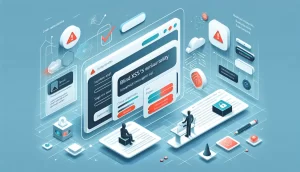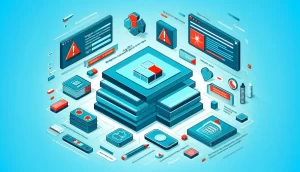Understanding Software and Data Integrity Failures in the OWASP Top 10
Software and data integrity failures, classified as A08 in the OWASP Top 10 list, are emerging as significant cybersecurity risks in modern web environments. These failures often arise in the intersection between the security of source code and its deployment, leaving systems vulnerable to exploitation by increasingly sophisticated attackers.
Introduction to Software and Data Integrity Failures
In the context of application security, software and data integrity failures refer to weaknesses that allow unauthorized alteration or tampering of software, data, or updates during development, distribution, or deployment. Such failures can lead to compromised systems, data breaches, and insertion of malicious code.
Why Are These Failures Considered a Real-World Threat?
The evolving threat landscape highlights why integrity failures have gained prominence:
- Supply chain attacks: Recent incidents like the SolarWinds breach demonstrate how attackers exploit weak integrity checks in software supply chains to distribute malware at scale. SolarWinds impacted thousands of organizations, including government agencies (Source: CISA, 2021).
- Insecure CI/CD pipelines: Automated build and deployment tools that lack stringent integrity verification can inadvertently introduce vulnerabilities.
- Dependence on open-source components: The widespread reuse of third-party libraries increases exposure to code that may be tampered with before integration.
Updated Research and Statistics
A 2024 report by OWASP shows that software and data integrity failures are among the fastest rising vulnerabilities, with incidents growing by over 35% year-over-year. Additionally, software supply chain attacks surged over 650% between 2020 and 2023 according to the Sonatype State of the Software Supply Chain.
Common Examples of Software and Data Integrity Failures
- Unchecked software updates: Failure to verify digital signatures on updates can lead to malicious versions being installed.
- Tampering with container images: Attackers can inject malicious code into containerized applications if image validation is lax.
- Insecure deserialization: Using untrusted data to reconstruct object states which can alter software behavior.
How to Mitigate Software and Data Integrity Failures
Implementing robust strategies for maintaining integrity is essential. Key practices include:
- Use cryptographic signing: Sign software artifacts, container images, and updates to verify authenticity.
- Verify third-party components: Employ tools that check for tampering and known vulnerabilities in dependencies.
- Harden CI/CD pipelines: Enforce access controls, audit trails, and monitor for unusual activities.
- Practice secure deserialization: Avoid deserializing untrusted input or use safe serialization methods.
- Leverage Software Bill of Materials (SBOM): Maintain an inventory of components and their provenance to detect anomalies swiftly.
Real-World Case Study: The SolarWinds Attack
In late 2020, attackers compromised the build system of SolarWinds Orion software, embedding malicious code into updates distributed to thousands of customers globally. This sophisticated software supply chain attack bypassed traditional defenses by exploiting trust in the update process. It highlights the criticality of verifying software integrity throughout the lifecycle.
The Role of Organizations and Developers
Maintaining software and data integrity requires a holistic approach:
- Developers: Adopt secure coding practices and integrate integrity checks early in the development lifecycle.
- Security teams: Continuously monitor and audit software supply chains and deployment pipelines.
- Management: Prioritize investments in secure development tooling and training.
Conclusion
Software and data integrity failures are no longer theoretical risks but tangible threats shaping the cybersecurity landscape today. With increasing reliance on third-party components and automated deployments, organizations must actively safeguard the entire software supply chain. Implementing comprehensive integrity verification measures not only reduces attack surfaces but also strengthens trust in digital ecosystems.



